Stereotypically, Italian tank forces were filled with antiquated designs that broke down constantly. Reality is somewhat more complicated. It's true that Italy fell behind in the arms race, but this happened closer to 1942 or even 1943. In 1940-41 Italian tanks were on par with British tanks, or sometimes even surpassed them. The Carro Armato M 13-40 was comparable to British cruiser tanks that it shared the front line with.
Back to the classics
Italy, like many tank building nations in the interbellum period, had poor luck with medium tanks. The significant decrease in military spending after the end of WWI hit tank building hard. The Carro Armato Tipo 2 never evolved into Italy's first medium tank.
Italian tank building rested on their laurels in the 1920s after the design of the FIAT 3000 light tank. The late 1920s and early 1930s were spent in cooperation with British companies, most successfully with Vickers-Armstrongs. The main result of this cooperation was production of CV 29 tankettes, which later evolved into the most common type of Italian armoured vehicle of its time: the CV 33 tankette or Carro Armato L 3. The Italians also purchased a sample of the Vickers Mk.E tank. It was studied, but the Italians decided to not produce it.
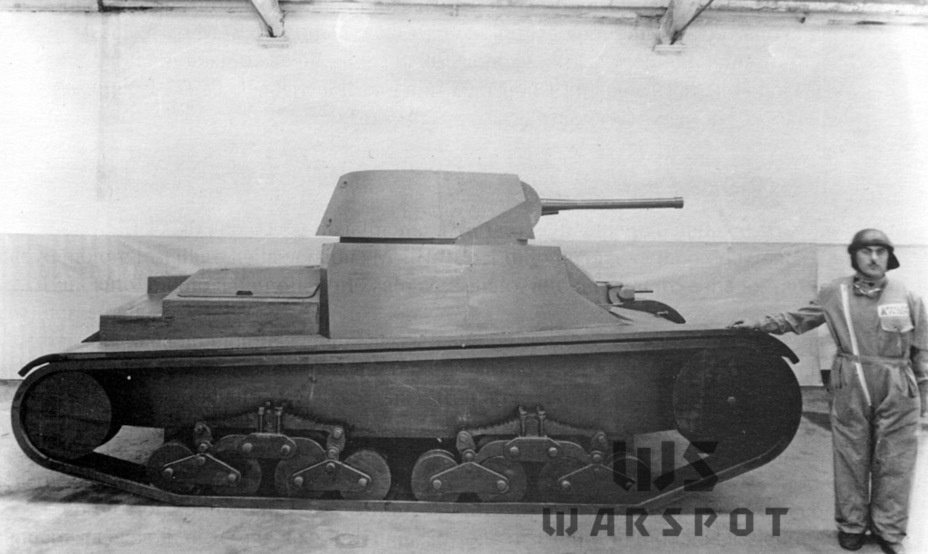
Cooperation with another company, William Foster & Co, was less successful, and thus not as well known. After WWI concluded the producers of the famous «rhombus» tanks had no market, so foreign buyers seemed like a tempting option. The company developed a tank known as the Carro Armato Da 9 Tonn, which was similar to a WWI tank. Instead of a turret it had an immobile casemate. By the mid-1930s interest in the Carro Armato Da 9 Tonn waned.
Instead, Ansaldo began to work on its own design, which still had British ancestry. The Vickers Mk.E chassis was used as the foundation of the tank called Carro di rottura 10T. This breakthrough tank weighed a little under 11 tons and had an unusual armament layout: a 37 mm L/40 gun (same as on the FIAT 3000) was installed in a ball mount in the hull, and two machine guns were installed in the turret. The layout was reminiscent of that used to arm the Char B.
Despite this unusual concept, the tank was accepted into service as the Carro Armato M 11-39. An order for 100 tanks was made. These 11 ton tanks were the only Italian medium tanks upon its entry into WWII and the first Italian medium tanks put into production. However, it's hard to call it a true medium tank. Its dimensions were close to that of the Vickers Mk.E and its mass was closer to that of a light tank.
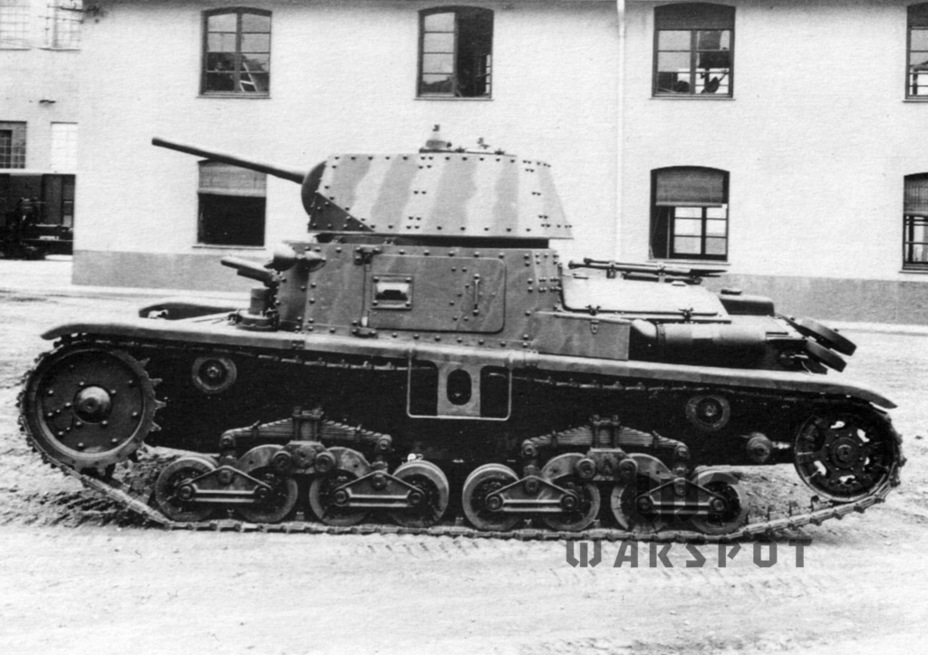
Even with this strange layout the Italian tank was far from the worst tank of its era. The tank had 30 mm of armour, a diesel engine, and decent mobility. Many medium tanks of the time were not as well protected.
Italians kept track of tank building tendencies around the world, not to mention their direct involvement in the Spanish Civil War. Experience in this war forced the Italians to rethink the layout of their medium tank. In the fall of 1936 Italian L 3 tanks and German PzI Ausf.A tanks first encountered the Soviet T-26, against which they were nearly powerless. The Soviet «relative» of the Carro Armato M 11-39 surpassed it in every way. The first T-26 tanks were captured by the Italians in the spring of 1937. Upon studying it, it was decided to correct the plans for medium tanks.
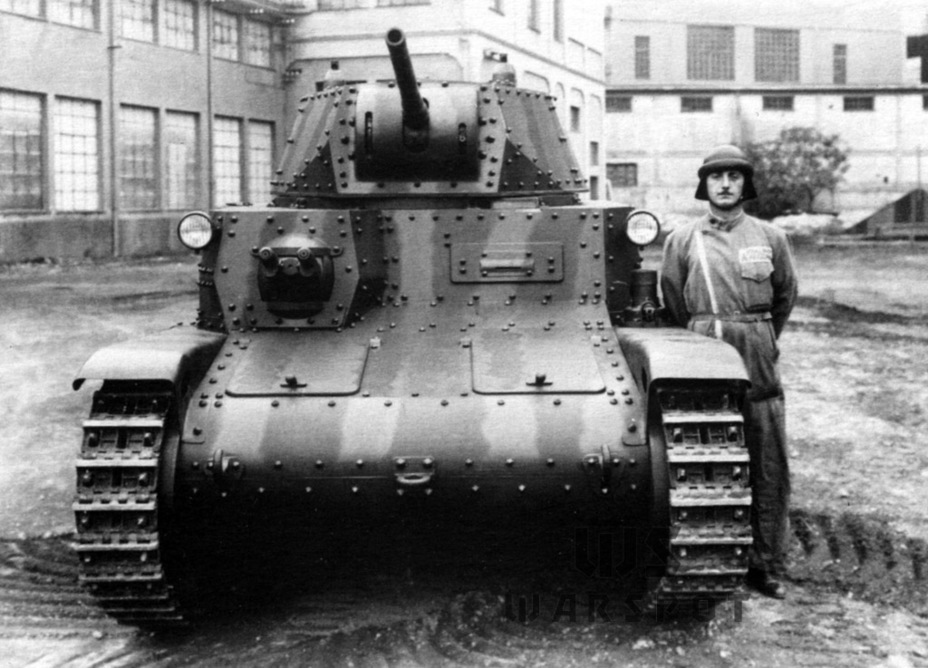
Ansaldo received the order for a new 13 ton medium tank on December 13th, 1937. It is sometimes stated that the Italians wanted an equivalent of the T-26, but that is not the case. The only link between the tanks was a common ancestor and suspension layout. The new 13 ton tank was designed on the chassis of the Carro di rottura 10T. The requirements stated that the tank must have a top speed of 35 kph and have enough fuel to drive for 12 hours. The main armament would consist of a 47 mm cannon and a coaxial machine gun. The cannon was a licensed copy of the Austrian Böhler M35 anti-tank gun. Unlike the M 11-39, the main armament was housed in the turret. The pair of machine guns migrated into the hull.
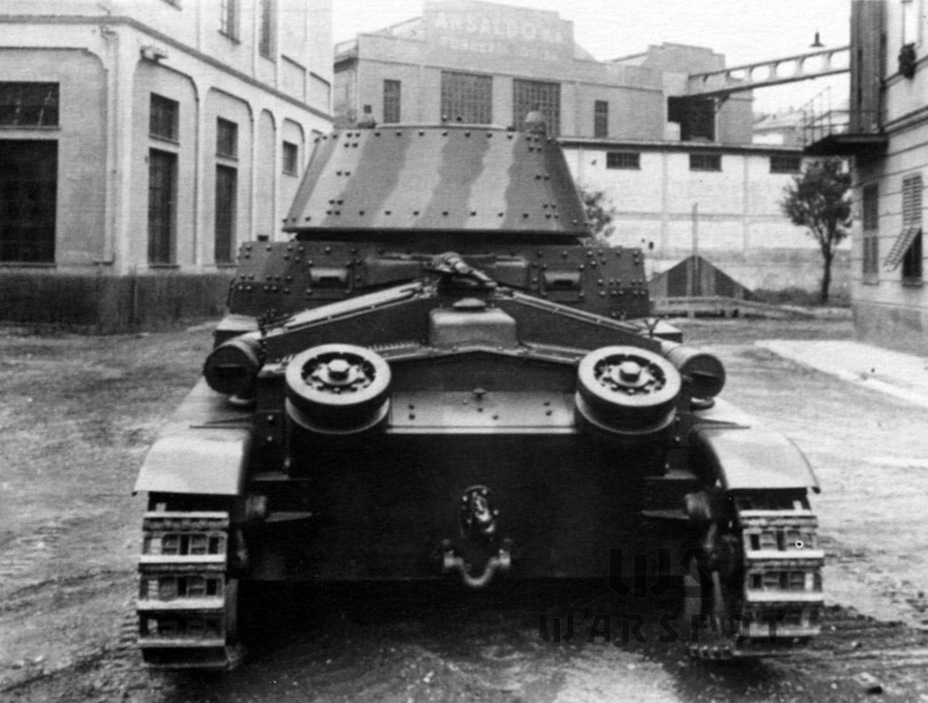
A full sized model of the tank was ready in the second half of 1938. The chassis of the M 13 was a little wider than that of the M 11, since it was going to have a larger turret. The turret platform also increased in size. The suspension was strengthened. There was an obvious resemblance between this tank and its predecessor. The overall shape of the turret platform with a large hatch in the left side remained the same.
The main novelty was the turret. It was conical in shape, which improved protection. However, the riveted connections made this protection worse. Unlike the T-26, the horseshoe shaped turret was not shifted to the side. The Italian tank also had no turret bustle, although there was an ammo rack in the rear of the turret. A large difference was the presence of a hydraulic turret traverse mechanism, first used on the Carro Armato M 11-39. The model had a pair of machine guns taken from the Carro Armato L 3.
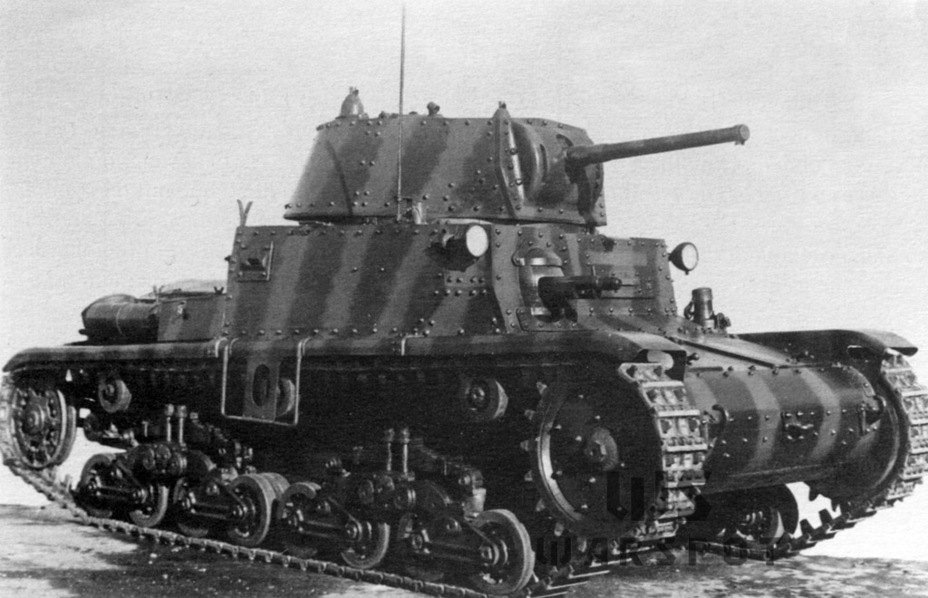
The experimental Carro Armato M 13 was shown in Rome on October 15th, 1939. Overall it was analogous to the wooden model, but there were differences. Instead of the machine gun mount from the Carro Armato L 3 a new design with a pair of Breda 38 machine guns was used. Observation devices were installed in the sides of the turret platform analogous to those used in the Carro Armato M 11-39. An antenna port was installed on the right. The turret received periscopes and a pintle mount for an AA machine gun.
After the trials, the decision was made to accept the tank into service as the Carro Armato M 13-40. The number 13 was misleading. At this moment the tank already weighed 14 tons fully loaded. Its mobility was a little weaker than required. The SPA 8T 11.14 L 105 hp V-8 engine was the same one as used in the M 11-39. The top speed of the tank was only 31.8 kph. The increase in mass was not only due to the installation of more powerful armament, but due to thicker armour. The front of the hull remained 30 mm thick, but the sides were improved to 25 mm. The turret armour was even thicker: the mantlet was 42 mm thick, the front of the turret was 30 mm thick, the sides of the turret were 25 mm thick.
The most numerous Italian
Italy resisted entering WWII until June of 1940, as it was not ready. However, Mussolini and the Royal Italian Army understood that it was only a matter of time. The order for 400 M 13-40 tanks was made on November 16th, 1939, even before it was accepted into service. Like with the M 11-39, the order was split between Ansaldo (assembly, armament, and other components) and FIAT (engines, gearboxes, and other transmission components).
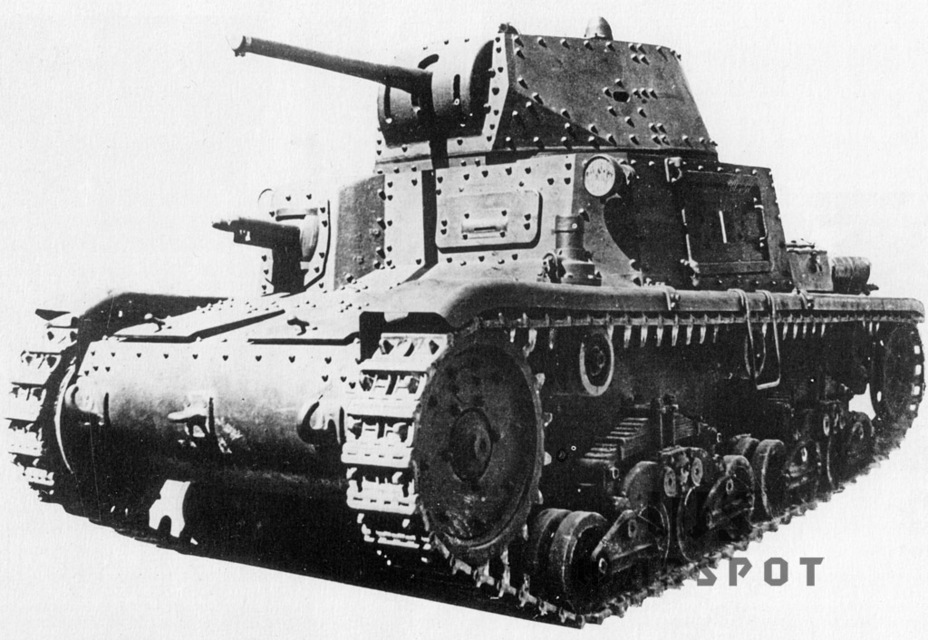
A batch of 100 tanks was built first. The first vehicles were delivered by Ansaldo in June of 1940. These tanks with registration numbers 2762 and 2781 entered service on August 6th, 1940. Production of the first series ended in the fall of 1940. The first production tanks differed from the prototype. M 11-39 steps on the sides of the hull were removed in favour of a simpler design. The design of the hatch in the left side of the hull changed. The complex observation devices were replaced with simple pistol ports.
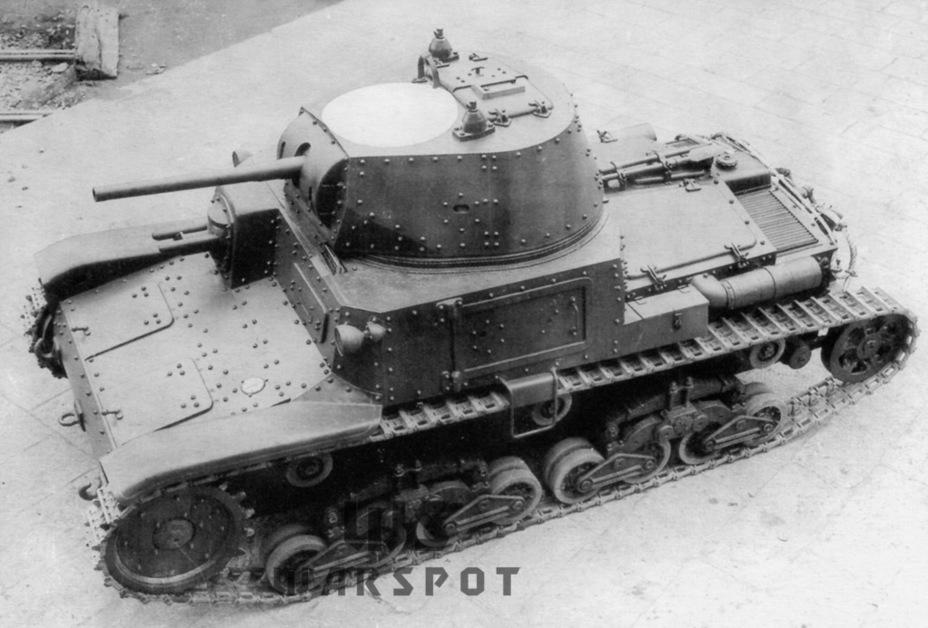
The second production series of 200 tanks began in the fall of 1940. Production of this series ended in 1941. The tanks did not change much. The biggest difference was the movement of the jack from the front left fender to the rear. The number of spare road wheels was reduced to one. The steps were reinforced. The fenders changed: the middle and rear sections disappeared. Considering that these tanks were fighting in the desert and kicking up huge clouds of dust, this was an odd decision. A number of tanks in this series received radios, unlike the first series.
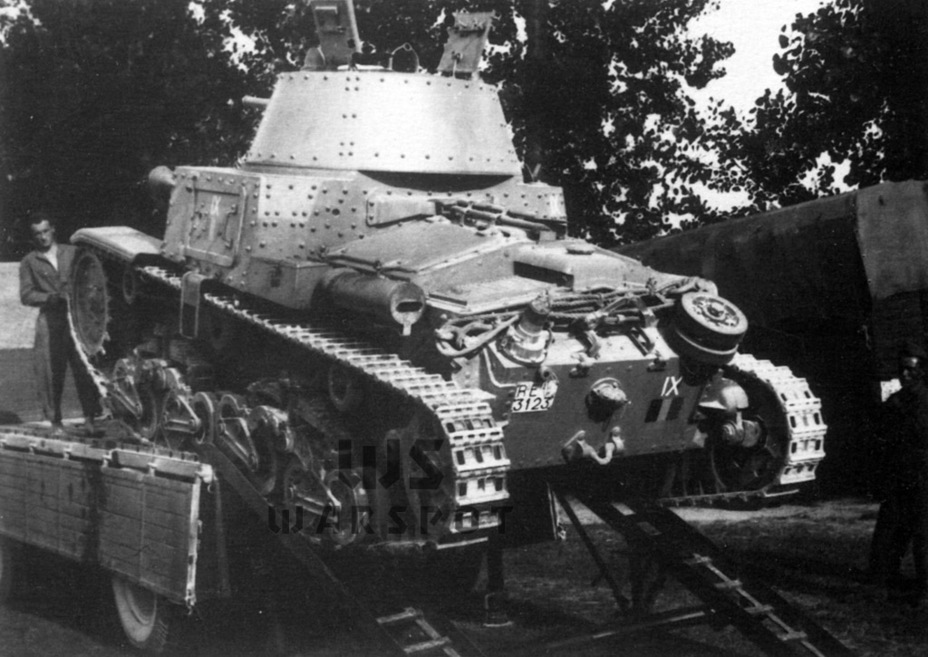
The third series, produced in 1941, was the most numerous. Italy was deep in the war by this point and significant losses in vehicles had to be replaced quickly. The order increased to 410 units. This was the ultimate version of the M 13-40. The radio that was tested on the M 13-40 prototype was only installed in large numbers starting in 1941. The engine was also supercharged. Its power increased to 125 hp, increasing mobility, but not top speed. The rear tow hook was strengthened, the exhausts were altered for the new more powerful motor, and an air intake was added to the roof of the turret.
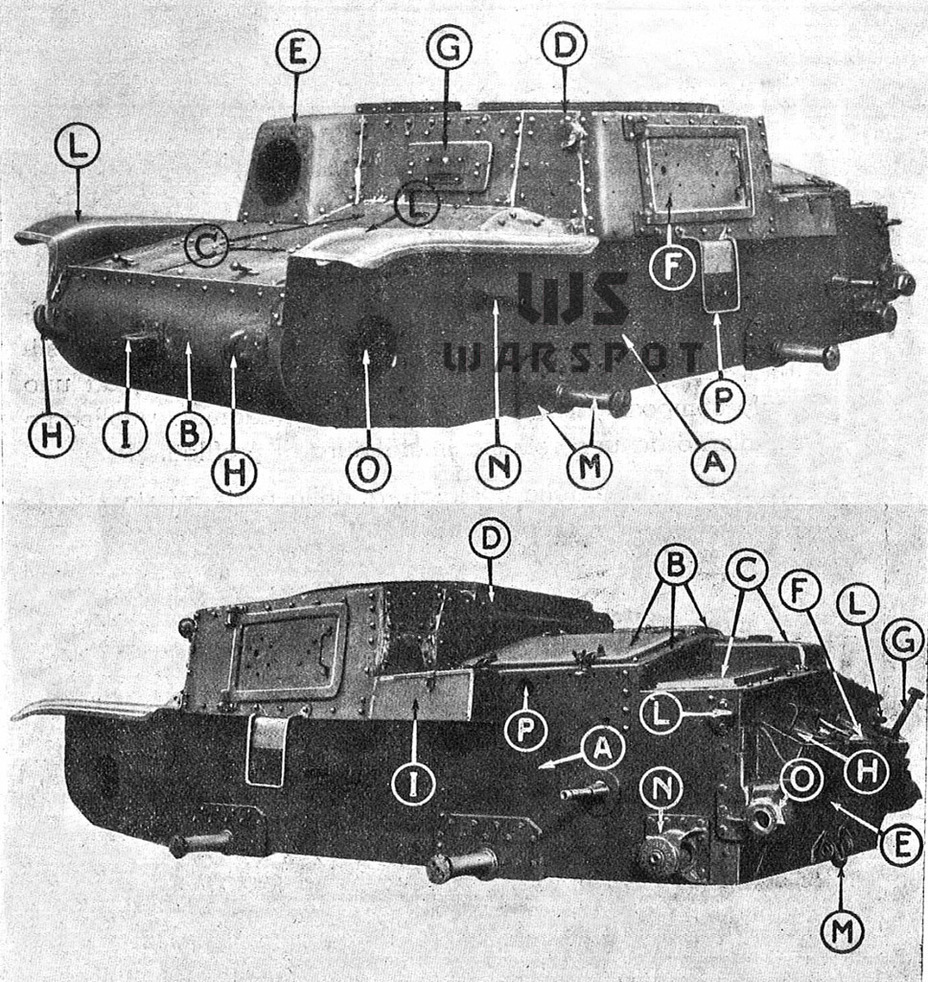
There was a certain inconsistency in the serial number of the vehicles. Only one range of serial numbers can be attributed to it for sure: 2762 to 3797.
A small amount of vehicles was built as commander's tanks called Carro Centro Radio. These vehicles can be distinguished by two antennas.
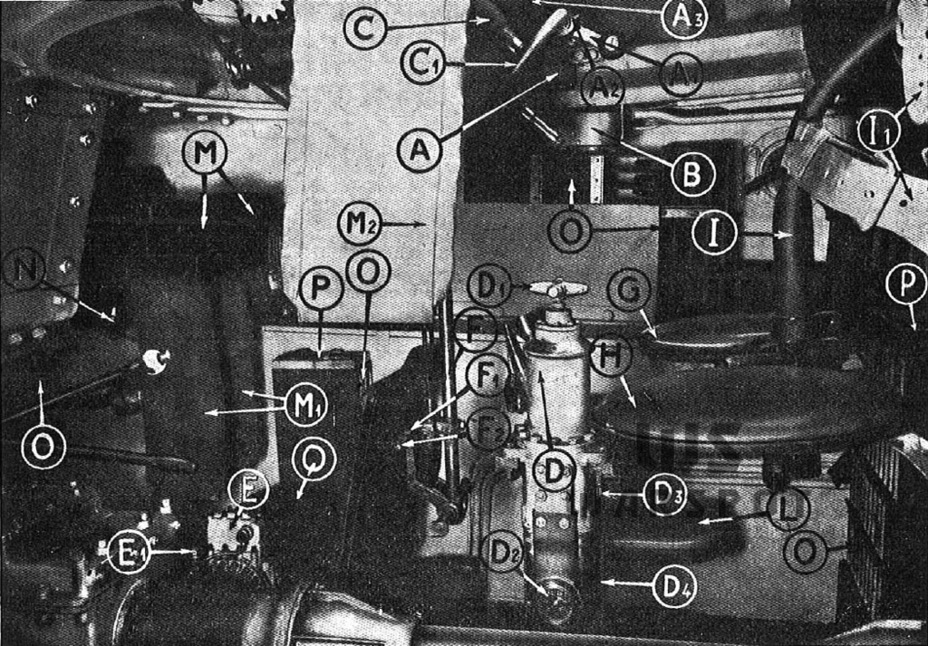
The Carro Armato M 13-40 continued to change. Improved vehicles received a new name: Carro Armato M 14-41. The first tank of this type received the registration number 3498. The first M 14-41 had nearly no differences from the late M 13-40. The only difference was the return of full fenders in initial production vehicles.
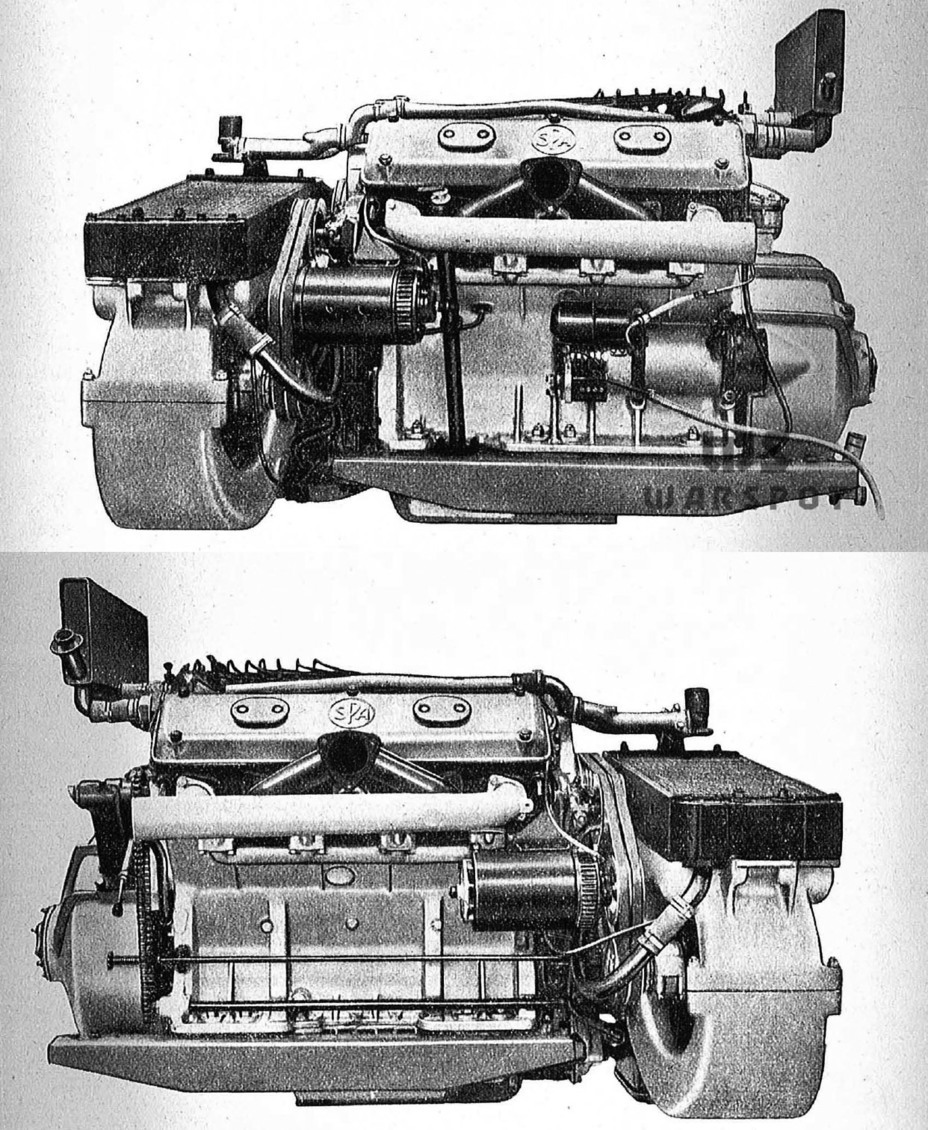
As with the Carro Armato M 13-40, the M 14-41 was broken up into series. The first was an order for 300 tanks. The engine was swapped out in the middle of this series. The tanks received an 11.98 L SPA 15T 145 hp engine. The top speed of the tank grew to 33 kph, the mass increased to 14.51 tons. The tank once again had a full span of fenders, as a result of which the steps were simplified. Tanks with the SPA 15T engine received a different cooling system grille and different exhaust pipes.
The tanks of the first series also had inconsistent registration numbers. Most were in the 3498-3829 range, but one received the registration number of 4092.
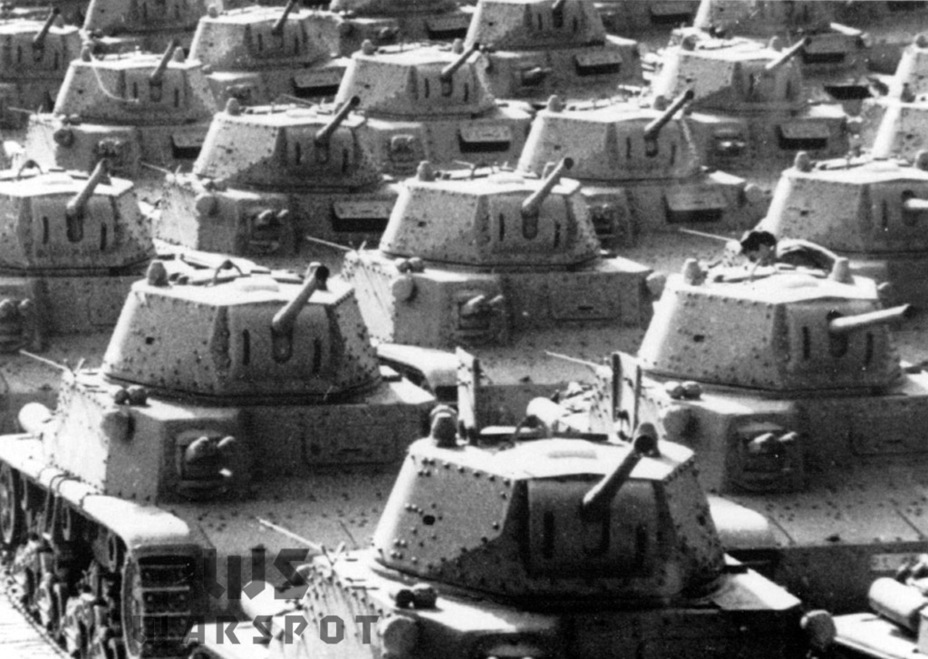
The M 14-41 second series was larger. These tanks were the most numerous Italian tanks to fight in North Africa. 395 tanks were built with registration numbers 4654-5021.
Various improvements were introduced as production went along. The biggest difference was the reinforcement of fenders with X-shaped stamping. Mud scrapers were introduced near the drive sprocket. Reinforcements were added to the front of the fenders. The openings for removing track pins received covers.
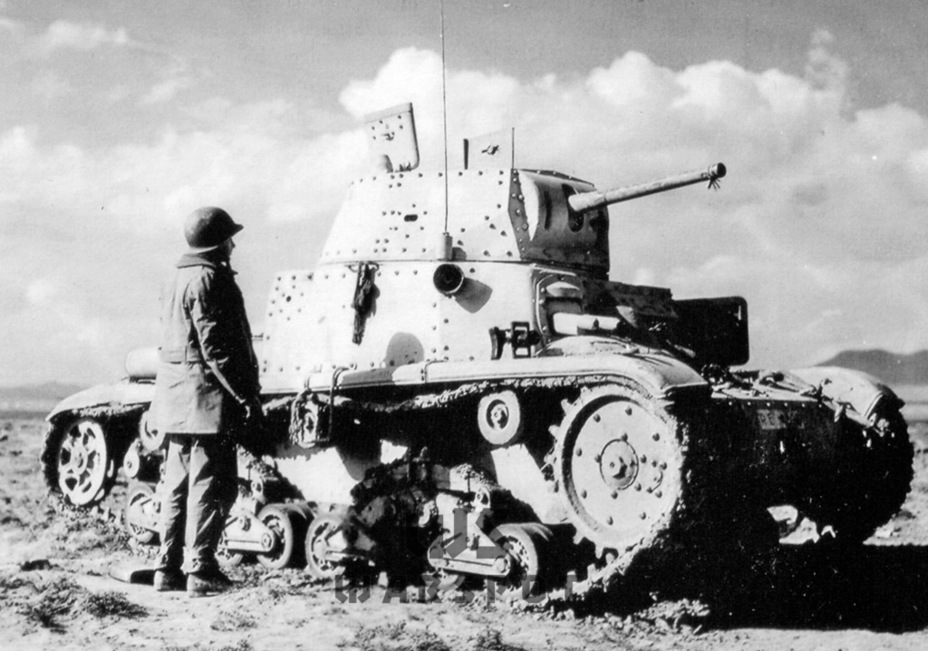
Production of the M 14-41 ended close to the start of 1943. In total 1405 M 13/M 14 tanks were built. These were the most numerous wartime tanks of the Royal Italian Army. They were already obsolete by the end of their production run. However, their replacement was obsolete even before it saw production. The designation of these tanks changed by the end of 1942: the M 13-40 became the M 40, the M 14-41 became the M 41.
A late replacement
The Carro Armato M 13-40 was a rather modern tank that was a match for the tanks of the British, Italy's greatest enemy. The situation began to worsen towards the fall of 1941. The Matilda, the most dangerous British tank, was joined by the more mobile Valentine and the less armoured but much faster Crusader. In 1942 American Lee and Grant tanks began arriving in North Africa. The mobility of these tanks was slightly less than that of the Crusader, but the protection was much greater. The Italian M 13-40 and M 14-41 looked poor in comparison.
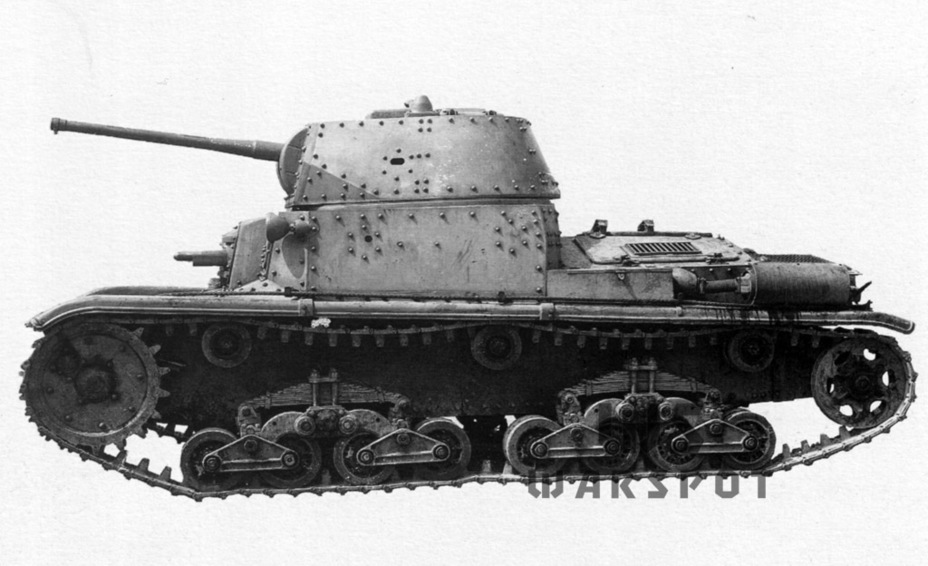
Due to the worsening situation in North Africa, Ansaldo began to work on the Carro Celere tank, otherwise known as the Sahariano. The development of the Italian answer to the Crusader hit a dead end and only a prototype was built. Modernization of the Carro M continued in three directions. Ansaldo was working on improving mobility, protection (especially from the front), and armament. All three directions were evolutionary. The chassis did not change and it was not possible to endlessly modernize it.
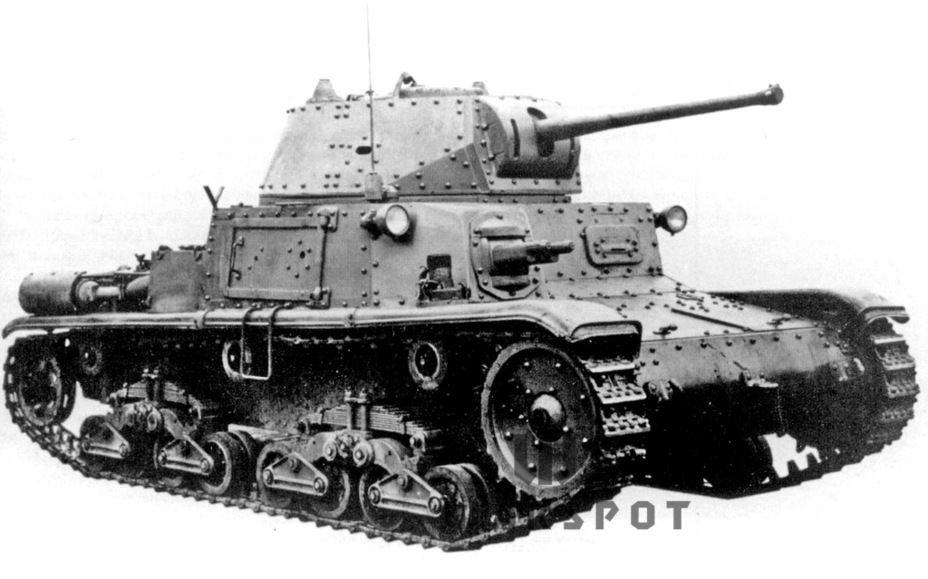
The experimental prototype of the tank called M 15-42 was ready in 1941. The tank differed little from its predecessors visually. The turret platform hatch was moved to the right side. The hull was almost 15 cm longer, and the space between bogeys increased to spread out the weight.
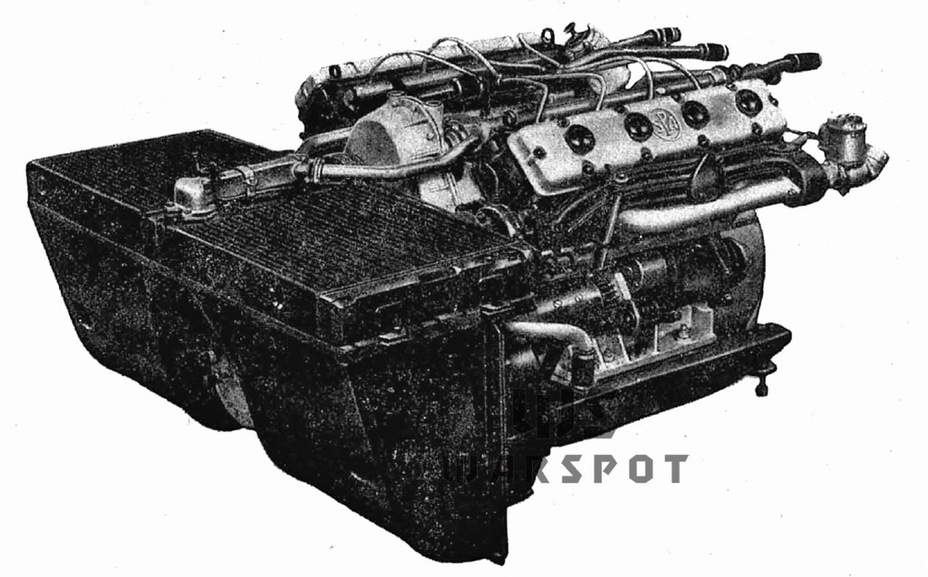
The rear of the vehicle changed noticeably. The tank received a new engine: the SPA 15 TB M 42 V-8. The dimensions were the same as the SPA 15T, but its power increased to 185 hp. The mass of the tank grew to 15 tons, but thanks to the increase in power the mobility improved. The power to weight ratio was 12.3 hp/ton and the top speed reached 38 kph. The volume of the fuel tanks increased from 182 L to 351 L. A rack for fuel cans was also added. The increase in weight and power resulted in an increase in fuel consumption, but the cruising range increased to 220 km on a highway and 130 kph off-road. The new engine and increased fuel capacity led to the enlargement of the engine compartment. The air intakes were also enlarged.
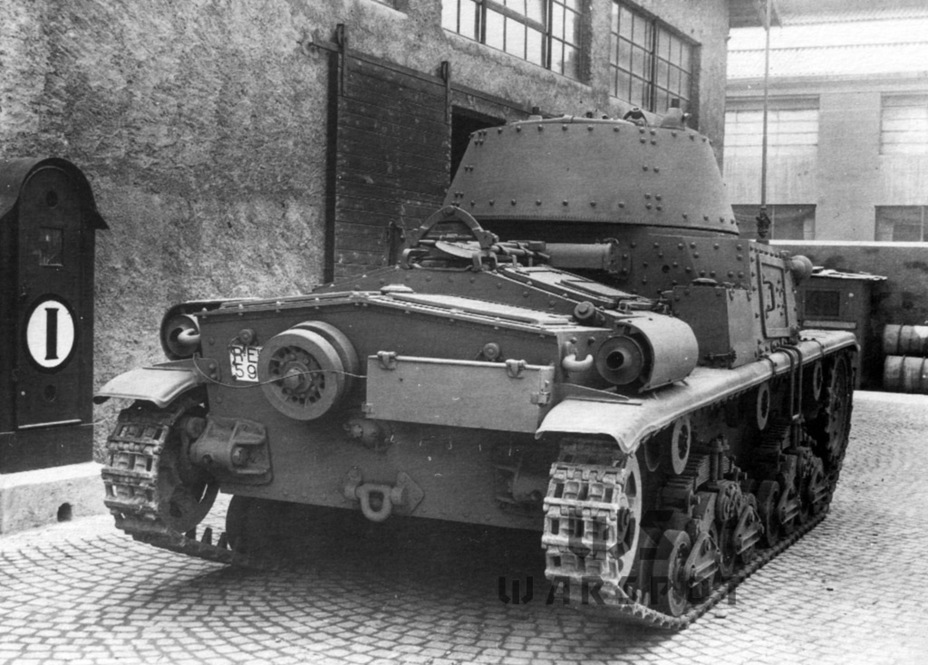
The changes in armament and protection were less noticeable. The front was now 45 mm thick (30 mm of main armour and 15 mm applique armour). The gun mantlet was thickened to 50 mm. THe rest of the plates remained the same, as the chassis no longer had a modernization reserve. The firepower increase was significant. The tank received a 47 mm L/40 gun. The AP shell of the 32 caliber version penetrated 43 mm of armour from 500 meters. The new gun could penetrate 50 mm of armour at this distance. However, even this gun could only effectively combat the Valentine at point blank range.
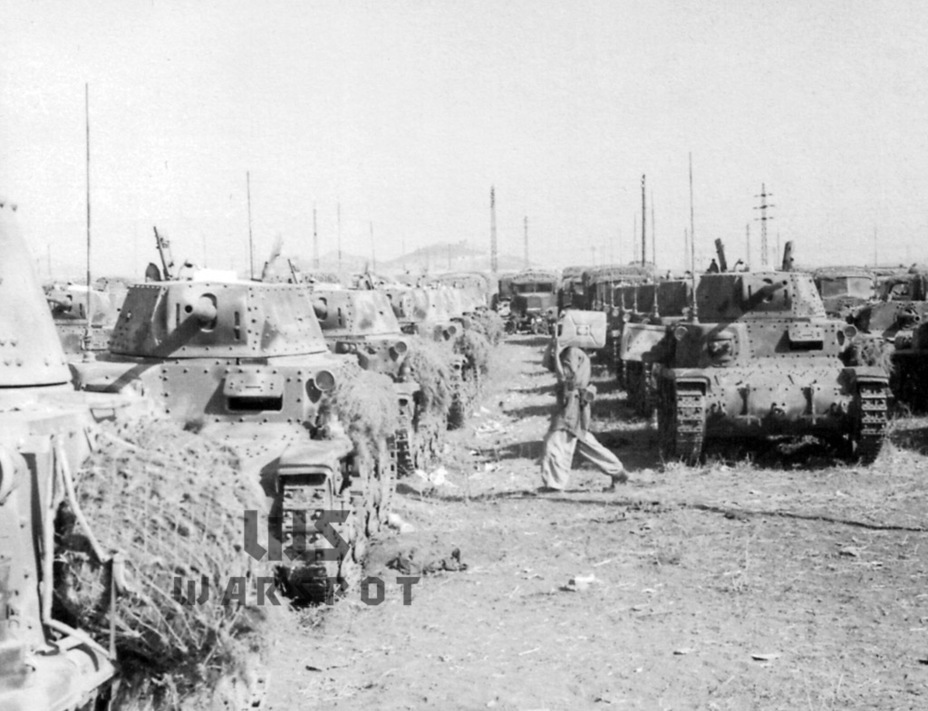
The first production M 15-42 was ready in the fall of 1942. On November 21st a tank with the serial number 5022 was assigned to a training center. 104 tanks of this type were built in 1942 by Ansaldo. A year long delay in production led to the tank which was renamed Carro Armato M 42 being obsolete by the time production began. These tanks were not sent to North Africa.
115 more tanks were built in 1943. 194 regular and 26 commander's tanks were built by September of 1943. Production did not end there, and 28 more tanks were built for Germany in 1944. In total 258 M 42 tanks were built.
Registration numbers of the tanks produced for the Italian army ranged from 5022 to 6393. SPGs and other special vehicles used the same registration number range.
Quickly obsolete
Italy entered WWII without much enthusiasm. Of course, one must not forgot the Anti-Comintern pact, as well as the joint participation of Italy and Germany in the Spanish Civil War, but there were still disagreements between the two nations that could lead to conflict. War against former allies from the First World War was also not a popular move.
A significant reason to avoid a new world war was the fact that Italy was not ready for it. 76 Carro Armato M 11-39 tanks were built in 1939. There were 100 of them by June of 1940. The illusion of a quick victory let Italy join the war on June 10th, 1940. France was nearly beaten, Britain was defeated in Norway and France. It seemed as though the Germans would win any minute now, and Italy, as an ally, would easily take British and French colonies. As further events showed, that prediction was incorrect.
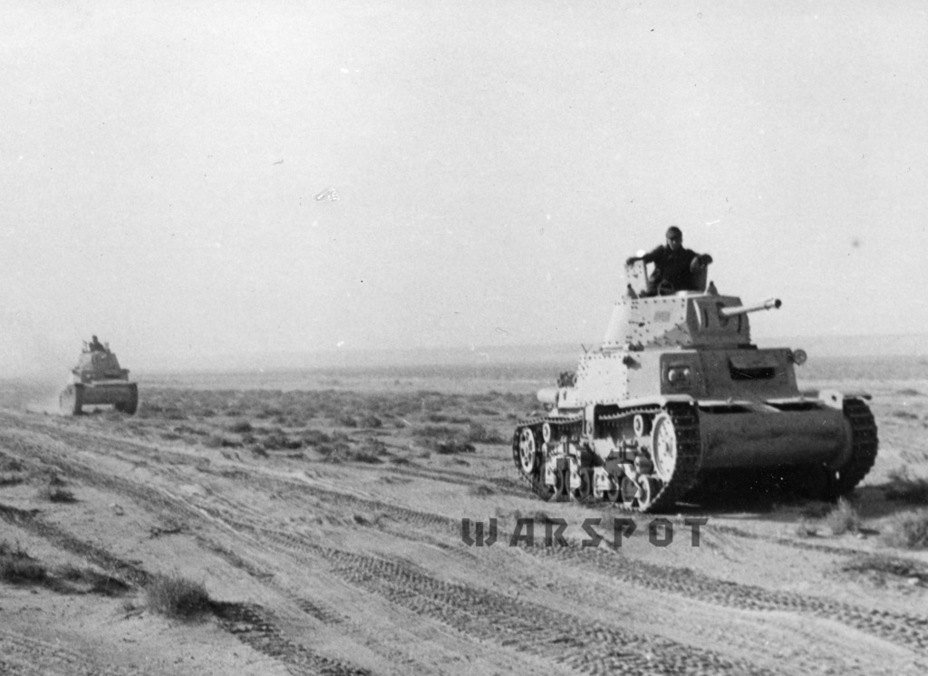
A lack of Italian forces led to the war in North Africa progressing slowly. The first Carro Armato M 13-40 only arrived in the fall of 1940. Had they appeared earlier, they could have changed the balance of power in the region. Italian tanks are often called the worst of the war and likened to Japanese tanks, but British tanks in the summer of 1940 were no better and partially even worse. Even the M 11-39 was superior to the Cruiser Tank Mk.I in protection, and its 37 mm gun could knock out the British tank from over a kilometer away. A typical British tank of the time was the Light Tank Mk.VI, which could only penetrate the Italian tank in the side. The M 13-40 was superior to any British tank that was present in North Africa at the time of its arrival. It was immune to even high caliber machine guns and the firepower of the 47 mm gun surpassed the British 2-pounder.
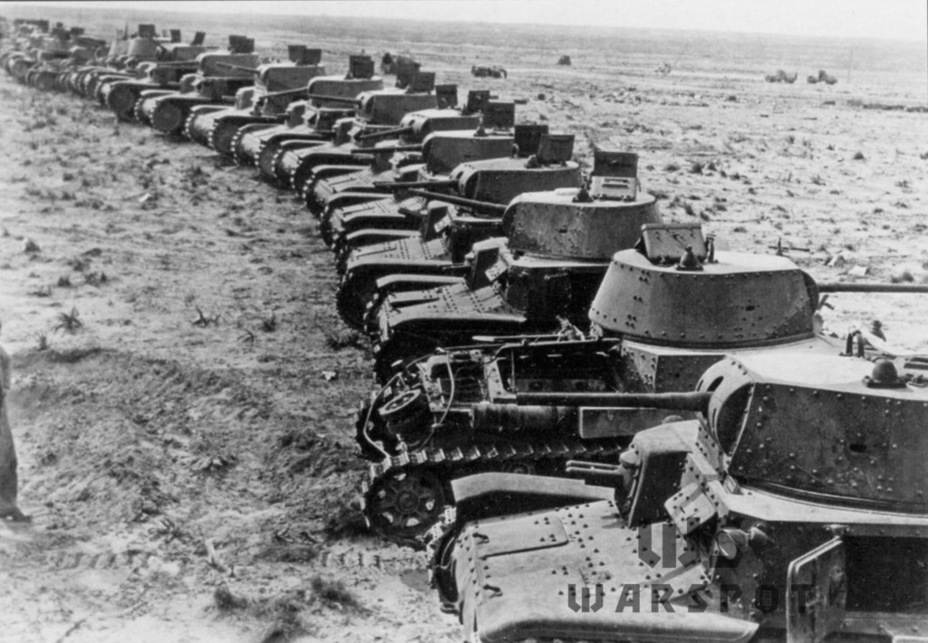
The closest tank in characteristics and purpose was the British Cruiser Tank Mk.II. It had comparable armament, protection, and mass, but slower speed and shorter cruising range (even with external fuel tanks). The reliability of the British tank was also inferior to that of the Italians. The Cruiser Tank Mk.IVA that appeared in late 1940 were more mobile, but also had a shorter range. The 28 mm thick armour did not cover the entire tank, and a lot of the armour was 14 mm thick. These tanks also suffered from technical issues.
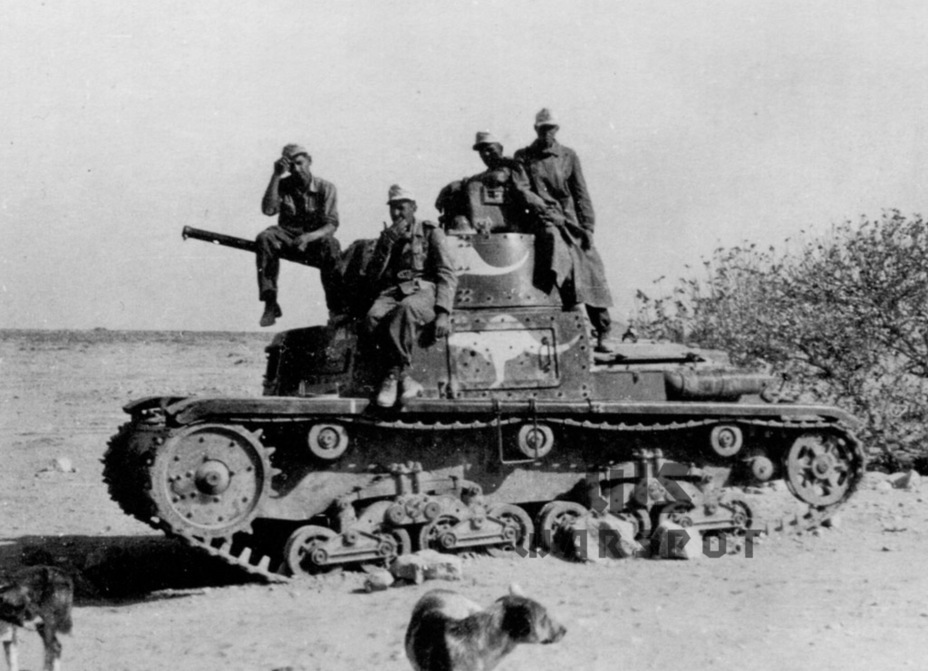
The biggest problem for Italian tanks began to arrive in North Africa in late 1940. This was the Infantry Tank Mk.II*, otherwise known as the Matilda. British infantry tanks delivered a sound defeat to Italian tanks during Operation Compass, which began on December 9th, 1940. Some Italian M 13-40 tanks were abandoned by their crews as they were powerless against the Matildas.
However, the record for destroying Italian tanks belonged to Lt. Norman Plough from the 2nd Royal Tank Regiment, who fought in a Cruiser Tank Mk.IVA. In one battle on February 7th, 1941, he destroyed 20 abandoned tanks. A number of captured tanks were claimed by Australians who then used them to defend Tobruk. The photos of tanks with kangaroos painted on the side are well known.
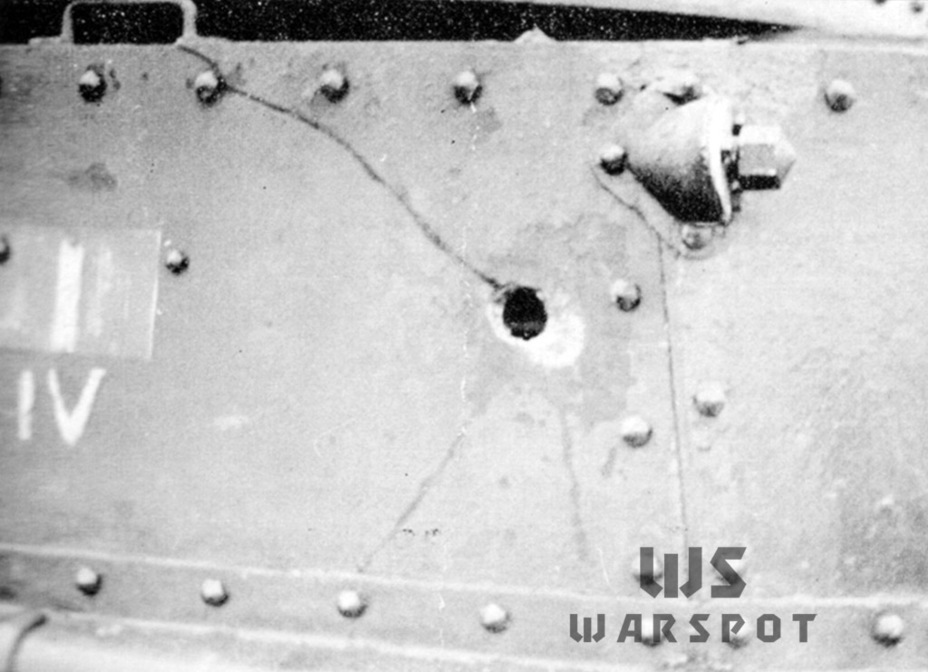
The Africa Corps was transferred to North Africa to save the Italians. The Germans already had experience in fighting Matilda and found a solution quickly.
North Africa was not the only theatre where the M 13-40 saw action. The Italian-Greek War began on October 28th, 1940. Since the Greeks had nearly no tanks, Greek artillery was the greatest opponent of the Italian tanks. The tanks were designed to withstand 20-25 mm shells, but 37 mm and higher calibers were common by WWII. 30 mm thick armour proved ineffective. 45-50 mm of angled armour was needed to reliably protect from even 37 mm guns.
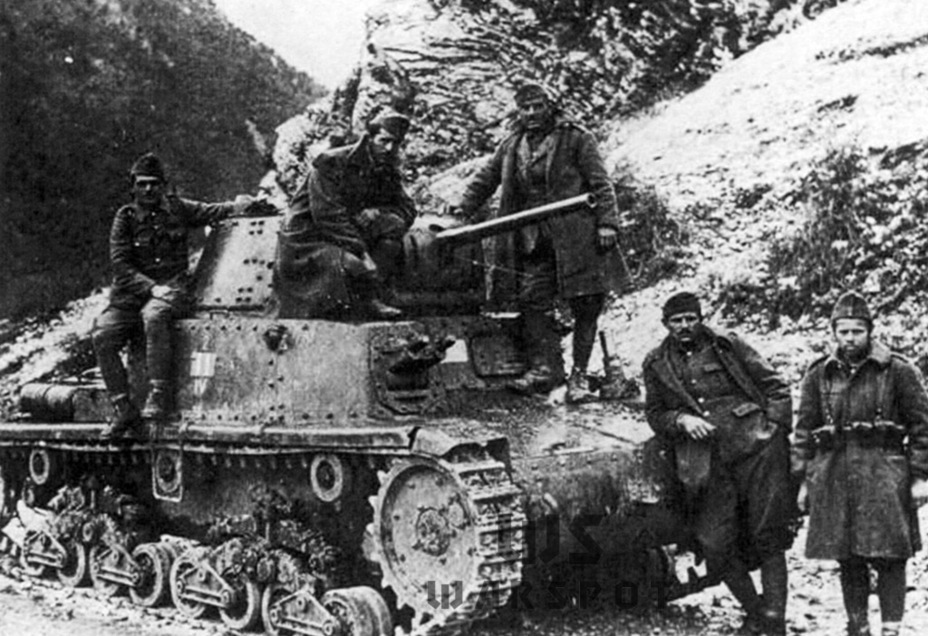
The underestimation of Greek anti-tank defenses cost the Italians dearly. On January 6th, 1941, the Greek army began a counteroffensive. One of the units sent to deal with the counteroffensive was the 4th tank battalion of the 131st tank division «Centauro». The battalion received the tanks just before the Greek counteroffensive, in December of 1940. The battalion took heavy losses from Greek artillery. Several tanks were also captured undamaged. Attempts to use tanks in March of 1941 had about the same effect. In addition to their enemies, Italian tankers fought the terrain. The Germans had to once again save their cumbersome ally.
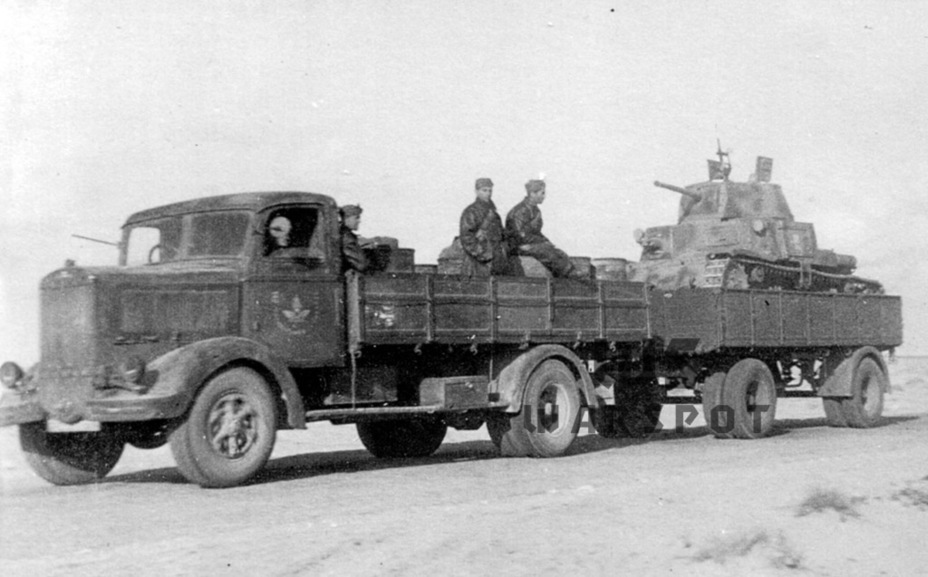
The Italians used their medium tanks as a part of tank battalions. According to the TO&E approved on August 19th, 1940, each battalion consisted of three companies of 12 tanks each, plus one tank for the battalion commander for a total of 37 tanks. This was the composition of the 3rd and 5th tank battalions formed in 1940. The 4th battalion received only 30 tanks due to the rush.
Tank units formed starting with the 6th battalion formed in December of 1940 were larger. The later TO&E consisted of 52 tanks, but the real number could be higher (up to 67 in the 8th battalion) or less.
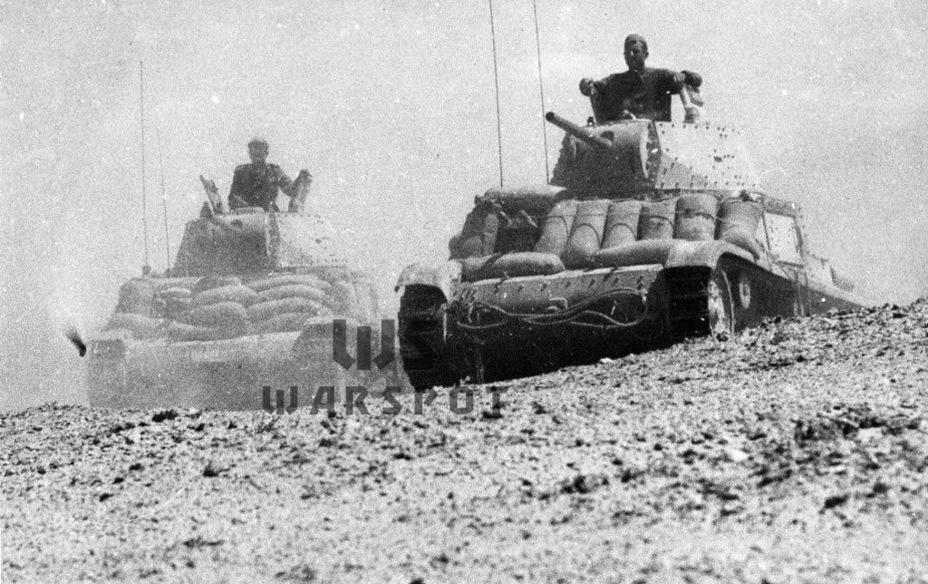
The parity between British and Italian tanks (barring the Matilda) persisted until the fall of 1941. However, the PzIII armed with the 50 mm L/42 gun and additional armour were arriving by this time. The M 13-40 did not measure up to them.
When the Crusader and Valentine were first used in battle in the fall of 1941 the situation began to worsen. The new British cruiser tank had comparable protection, but was much more mobile. The Valentine was a little more sluggish, but its armour was impenetrable to the Italian tank. The situation could be improved somewhat with 50 mm thick armour and a more powerful gun, but the Carro Armato M 15-42 only entered production in the fall of 1942. Italian tank industry began to fall behind the British.
It was not only the Italians who fell behind. Similar failure to keep up was apparent in Japan, Hungary, and Sweden. The leading tank building nations made a huge leap forward during WWII that minor nations could not keep up with. By mid-1942 Italian tanks had little effect on the battlefield.
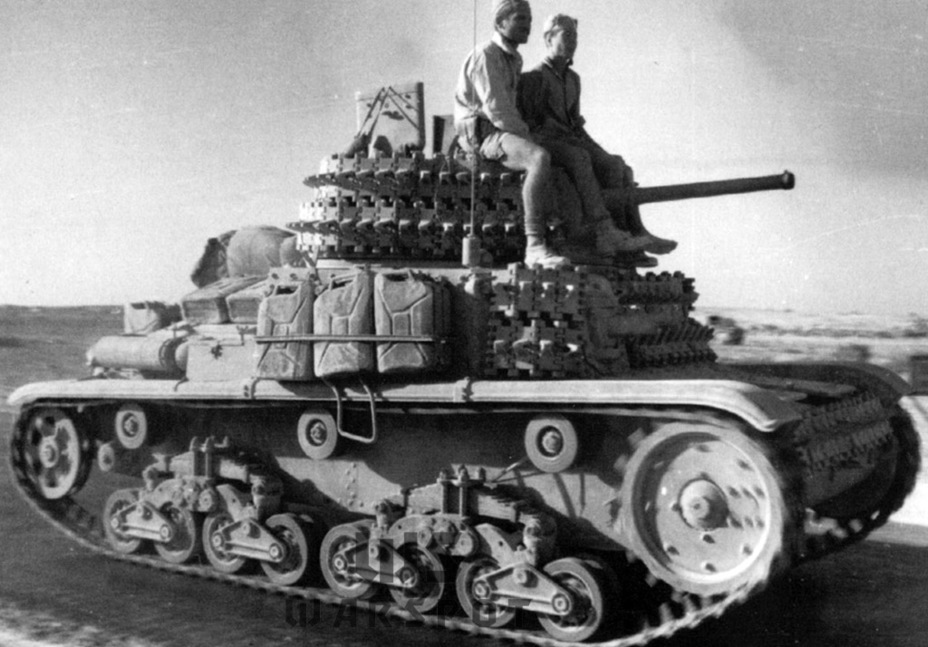
It is worth discussing the use of Italian medium tanks in the German army separately. The Germans carried out an operation to capture all Italian vehicles still in the country in September of 1943. The Wehrmacht obtained 21 M 13-40s, 1 M 14-41, and 92 M 15-42. As mentioned above, 28 M 15-42 were built specifically for Germany. There is information that the M 13-40 received the index M13-40 735(i), M 14-41 — Pz.Kpfw. M14-41 736 (i), and the M 15-42 — Pz.Kpfw. M15-42 738 (i). However, these designations were only used in the D50/12 manual. In correspondence other names were used. For instance, the M 13-40 was called Pz.Kpfw.M 13-40 (i) or just Pz.Kpfw.M 13.
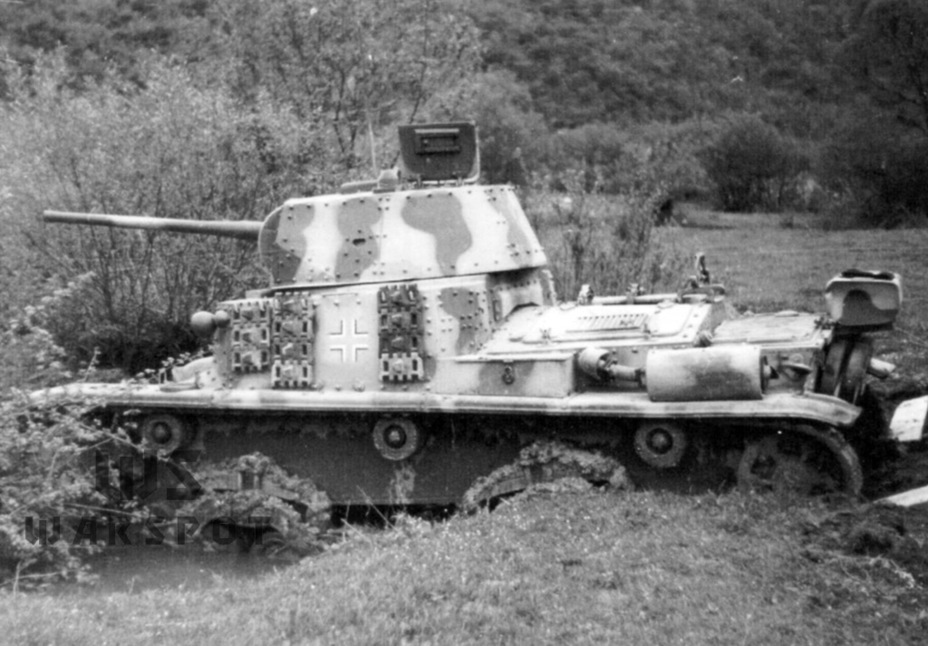
The Pz.Kpfw.M 15 was used the most by Germany. It was often sent to units that fought Partisans. For instance, these included the 12th special purpose tank battalion, 202nd tank battalion, 10th, 12th, 14th, 15th, and 16th police tank companies, and the SS 105th tank battalion. Most of these units fought in the Balkans.
Tanks were often used alongside SPGs. The Germans valued the Italian SPGs higher than their tanks. 278 SPGs and special vehicles were built on the M 15-42 chassis for the Germans, 10 times as many vehicles as the tanks. Even the 18 caliber 75 mm gun could penetrate 70 mm of armour from 500 meters. Other guns used on the SPGs were even more powerful, which allowed them to successfully combat Allied vehicles.
The tanks had plenty of work. They were even spotted in Warsaw, where they were used by police units.
The Italian tanks fought in police units until the very end of the war. About two dozen tanks were used by the German-allied Italian Social Republic. About 20 medium tanks remained in Italy at the end of the war, more than half of which were M 42s. Most of these tanks served into the 1950s and survive to this day. 25 of these tanks still survive, two of which are in running condition.
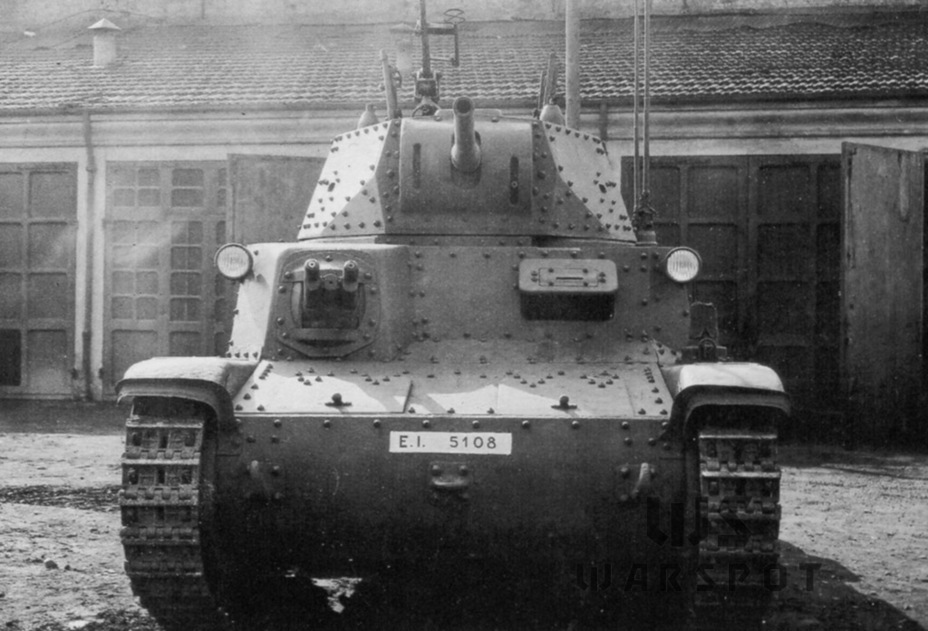
Italian designers created a decent tank. The Carro Armato M 13-40 was a serious contender at the time it was put into production. However, tanks become obsolete quickly in wartime, and the tank never received a worthy successor.
Translated by Peter Samsonov. Read more interesting tank articles on his blog Tank Archives.
Sources:
- Gli autoveicoli da combattimento dell'Esercito Italiano P.1 (Dalle origini fino al 1939), Nicola Pignato, Filippo Cappellano, SME, 2002, ISBN 88-87940-28-2;
- Gli autoveicoli da combattimento dell'Esercito Italiano P.2 (1940-45), Nicola Pignato, Filippo Cappellano, SME, 2002, ISBN 88-87940-29-0;
- Carro M. Carri medi M 11-39, M 13-40, M 14-41, M 15-42, semoventi e altri derivati p.1, Andrea Tallillo, Antonio Tallillo, Daniele Guglielmi, Gruppo Modellistico Trentino, 2010, ISBN 978-88-902511-6-0;
- Carro M. Carri medi M 11-39, M 13-40, M 14-41, M 15-42, semoventi e altri derivati p.2, Andrea Tallillo, Antonio Tallillo, Daniele Guglielmi, Gruppo Modellistico Trentino, 2012, ISBN 978-88-905651-5-1.




